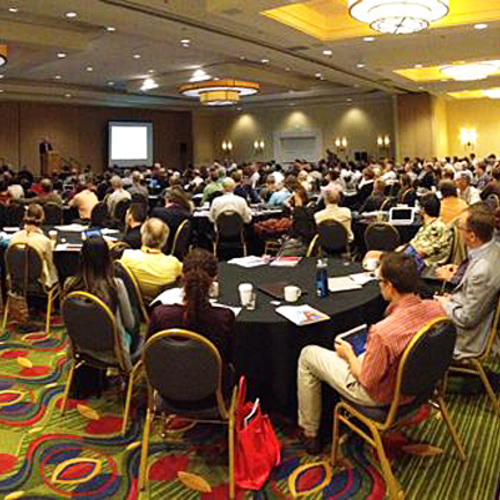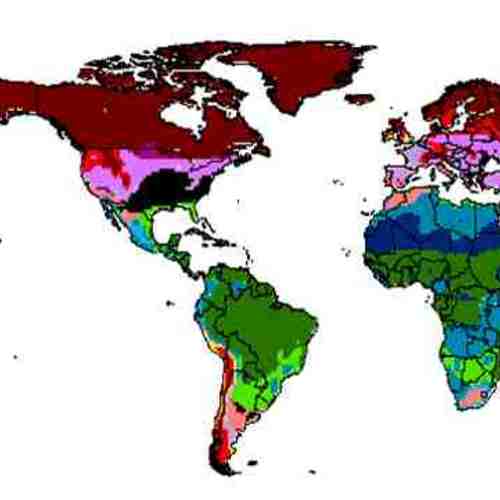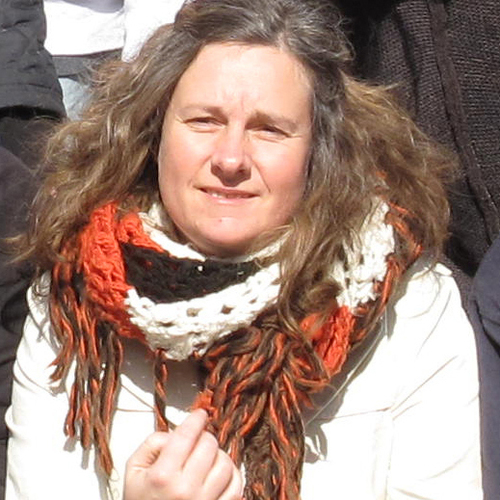
Image Credit: PHIUS
There’s this thing called passive house. It’s a terrible name. Almost everyone agrees on that. Look at how its adherents are driven to a frenzy and you’ll see that the name doesn’t really fit. The houses themselves aren’t passive either, but let’s leave that aside for now.
Let’s talk about numbers and objectives. The North American Passive House program of PHIUS grew out of the German Passivhaus program, which has one set of targets for the whole world. Now PHIUS has adapted the German standard to suit North America. It’s an important change. And the frenzy of the adherents has been fun to watch!
The Passivhaus requirements
First, let me say a few words on terminology. When I use the word “Passivhaus,” I’m referring to the German program promulgated by the Passivhaus Institut. When I use the term “Passive House,” I’m talking about the North American program of PHIUS (which, by the way, stands for Passive House Institute U.S.). And if I use the term “passive house,” in lower case, I’m talking about the whole concept.
The two basic Passivhaus requirements put limits on a home’s heating load (either peak or annual) and on the primary energy (also known as source energy). Here they are, as shown on the PHI website:
Heating: Annual load ≤ 15 kWh per square meter (4.75 kBTU per square foot) of net living space (what PHI calls treated floor area) or peak load ≤ 10 W per square meter (3.2 BTU/hour per square foot)
Primary energy: ≤ 120 kWh per square meter (38 kBTU per square foot) of treated floor area per year
They added cooling load requirements similar to the heating loads for places that need cooling. The PHI standard also has an airtightness requirement (≤ 0.6 air changes per hour at 50 Pascals, ACH50) and a comfort requirement based on temperatures in the house. Then you look a little further and find other measures for the efficiency of the ventilation system used and the U-values of the windows installed. So it’s not really as simple a program as rumor has it, but the basic targets are the same everywhere.
There’s more detail in there when you really dig in, but it’s really a simple, elegant standard. It’s really appealing to think all you have to do is meet a few requirements that are the same the world over.
But will it work for North America?
Professor John Straube, one of the smartest and most knowledgeable people in building science, wrote a critique of the Passivhaus program in 2009. He compared homes designed to meet Passivhaus requirements with homes in the US Department of Energy’s Building America program. It’s a great read and a good starting point to understand why the Passivhaus standard needed modification for North America. Here’s his conclusion:
Achieving the specific Passivhaus target of 15 kWh/m2/yr for heating on site energy use, results in investment of materials and money that often will exceed other less costly and environmentally impactive solutions. Achieving the equally arbitrary 120 kWh/m2/yr has more direct environmental benefits than the heating target, but may best (i.e., with least cost and environmental damage) be achieved using some on-site or renewable off-site power generation.
As new clean, local, and renewable energy sources come on line over the next 25 years and become more affordable than current PV prices, it is unlikely that the extreme conservation measures taken by PassivHaus to meet the specific requirements will be considered an optimal deployment of resources for cold climate housing.
The following year, Alex Wilson of Building Green also found the Passivhaus program unsuited to the needs of North America. He listed three main deficiencies, and gave corresponding recommendations.
- “In climates with very high heating or cooling loads, the Passive House standard right now may be too difficult to achieve.” His recommendation was to focus on the source energy rather than the heating and cooling loads in really hot or cold climates. After all, homes in a really cold climate won’t need much (or any) allowance for cooling load so “why not allow some of that energy to be used for heating?” The key is the source energy.
- Passivhaus targets are based on floor area. Wilson noted the implication: “larger houses can use more energy and meet the standard, and it’s harder to certify small houses.” The airtightness requirement is based on ach50, which also is lends a bias toward larger homes.
- Give some incentive for existing buildings to do passive house. “Solving our climate crisis will require a huge focus on existing buildings, and a strong standard like [Passivhaus] could be a tremendously important tool in getting there. But it’s just too hard to achieve right now.” He suggested convening a panel of experts to “come up with a more reasonable Passive House Retrofit Standard for North America.”
Lloyd Alter of Treehugger saw Wilson’s article and wrote about it as well. In his 2010 article, Passivhaus: Too Rigid and Inflexible for America, he summarized Wilson’s critique and ended with, “Good points all.”
And they were right. Passivhaus was a boutique program and was destined to remain a boutique program with the PHI requirements.
Introducing the PHIUS+ 2015 Passive Building Standard
PHIUS was an independent organization working as the agent of PHI in North America when Straube and Wilson wrote their critiques. In 2011, PHI canceled the contracts it had with PHIUS. In 2014, PHIUS introduced its new climate-specific passive house standard.
In the standard adaptation report, they wrote of the problems with the one-size-fits-all approach, “In some climates this has led to very costly projects; in others it has produced significant thermal comfort issues.” [p. 5] I’m likely to be accused of denigrating PHI by writing this, but the truth is the Passivhaus standard needed modification. Here’s another quote from the report:
Almost every project offered a new climate challenge. These circumstances sometimes resulted in projects that had the same overheating problems as early “mass-and-glass” designs from the 1970s. In other instances — in Louisiana for example — the German-derived standard did not account for humidity loads and predicted cooling demands inaccurately. [p. 5]
As a result, PHIUS made some changes while keeping the overall structure and intent of Passivhaus. It’s still passive house, but now it has diverged from Passivhaus a bit. Here are the main changes:
Airtightness: Go from 0.6 ACH50 to 0.05 cfm50/square foot of gross enclosure area.
Source energy: (1) Change from per square foot basis to per person; (2) Change the source energy factor to the US average of 3.16; (3) Base the lighting and miscellaneous electrical loads on American numbers (from RESNET); (4) “Set the source energy limit to 6,200 kWh/person/year and tighten it to 4,200 kWh/person/year within a few years;” and (5) Account for photovoltaic (PV) inputs or other on-site renewable electricity the same way solar hot water is.
Space conditioning: The annual and peak heating and cooling load targets vary by climate.
There’s a whole lot packed into those three items! The first one is something that some of us have been calling for for a long time. I wrote about the problem with ACH in two articles (here and here) back in 2010. As Wilson noted in his article, ACH is biased toward larger houses.
The source energy changes are mostly about making the program fit the reality of North American buildings and giving PV a fair shake. The more fundamental change is going from a target based on floor area to one based on the number of people. Exploring that last part is probably worth its own article.
And finally, making the standard climate-specific is only one of the big changes, and that happens with the heating and cooling load targets. Now instead of 4.75 kBTU per square foot or 3.2 BTU per square foot, you use the targets developed for the climate where the project is located. Go to the PHIUS+ standard page and click on a location on the map to find out what your numbers are.
A lot of science that went into developing this new passive house standard. PHIUS worked with Building Science Corporation using a U.S. Department of Energy grant. I’m tempted to jump into explaining the optimization process right now, but let’s save that for another time. I’ve already thrown a lot at you in this article. If you want to understand the science behind the changes, download and read the standard adaptation report (pdf).
PHI has made some tweaks to Passivhaus over the years, and it’s better than it used to be. That’s great. The changes made by PHIUS are more extensive and, I believe, more suitable to the realities of construction in North America.
Stop complaining; we’ve got work to do!
One of the main goals of passive house is to decrease our impact on the environment, right? We’ve got some serious problems that we can help solve by reducing energy use. We ought to be looking at the best way to do that. It’s ludicrous to think that the numbers 4.75 or 0.6 were handed down from God. (I heard it was written on the back those tablets Moses brought down from the mountain.) Our goal is to design, build, and renovate buildings so they’re comfortable, durable, healthful, and energy efficient. Passive house could, and should, be the best way to do that.
The Passivhaus program as it existed when it came over from Germany 15 years ago was flawed. GBA editor Martin Holladay is another critic who’s been pointing the way to a better program over the past decade. Here’s a sketch he made clearly illustrating that the program had problems. Which scenario do you think will save the most energy?

We don’t always have the ability to spread out those seven layers of insulation among seven houses, but we’ve got to keep our eyes on the bigger picture. Unfortunately, a lot of people seem to have myopia when it comes to this subject. If PHIUS gives a rationale for its modified standard, we’re accused of “denigrating PHI.” Because we’ve modified the standard, we’re told we shouldn’t call ourselves passive house. If we say, “Less filling,” they say, “Tastes great.” We just can’t win!
Get over it already! PHIUS does passive house. We have a modified standard. We’re here to stay. Now, we’ve got work to do. Anyone who’s interested, come along and join us. Or do it your own way. If you’re curious to find out what PHIUS is up to, come to Philadelphia in September for the 11th annual North American Passive House Conference.
Let the frenzy begin!
Allison Bailes of Decatur, Georgia, is a speaker, writer, building science consultant, and the author of the Energy Vanguard Blog. Check out his in-depth course, Mastering Building Science at Heatspring Learning Institute, and follow him on Twitter at @EnergyVanguard.
Weekly Newsletter
Get building science and energy efficiency advice, plus special offers, in your inbox.















4 Comments
PH standard
Good article. I agree with just about everything. At the end of the article you correctly state that our goal is to build homes that are comfortable, durable, healthy, and energy efficient. I would suggest that we add affordable to that list. About 24% of the cost of all new homes is derived from regulations. Some are necessary but many are not.
Using single US grid source energy factor is ridiculous...
...and it's based on woefully stale data in a rapidly evolving grid.
This is a criticism I've made before, but it's more valid now than ever. Using a country-wide single average makes some sense in the European model due to the comparatively modest geographical scale of European countries, whose national grids are typically controlled by a single national entity. In the US there are multiple independently operated grid regions, some with only gossamer-thin grid connections to neighboring regions (eg. ERCOT).
The coarsest geographical average lumping that has any validity at all for PHIUS would be the major North American Grid regions:
http://www.opuc.texas.gov/images/NERC_Interconnections_Map.jpg
http://www.geni.org/globalenergy/library/national_energy_grid/united-states-of-america/graphics/nercmap-2006-04-07.jpg
While breaking it into 7-8 different grid source energy factors based on location takes more analysis for PHIUS, it has at least a vague resemblance to the true impact of a particular PassiveHouse, whereas using the national average (based on decade old data sets) has none.
Anders
Could you expand on our comments on affordability and its relationship to regulations? I'm interested in where the 24% comes from. As land use and construction are both regulated, surely 100% of the costs of building are 'derived" from them? What are the regulations that you see as adding unnecessary costs to a house - especially in the context of a discussion about passive house standards, which add an appreciable amount of expense to the process.
passive house standard
Malcolm: I wish I had a good answer for you. Bozeman, Montana is currently writing a new uniform development code. I encouraged our cities staff to consider affordability when walking through this enormous document. Often planners think in terms of consistency and organization but not affordability. Every word in the UDC has an impact on affordability. It is not an easy chore. I recently build a passive home that should meet 98% of PHI's protocol. The cost of the project beyond the normal regulations, code, labor and materials was about 15%. I personally think substantial diminishing returns with real opportunity costs happen before that 15%. My clients chose to move forward for comfort and other reasons. At least they made an educated decision to do so.
Nationally, we need to reconsider the cost of regulations. 24% is a huge number. Some regulations are necessary but many could be simplified or modified to allow greater flexibility.
Log in or create an account to post a comment.
Sign up Log in